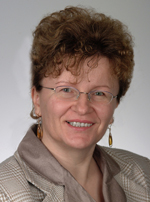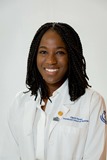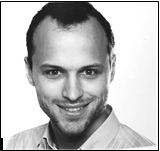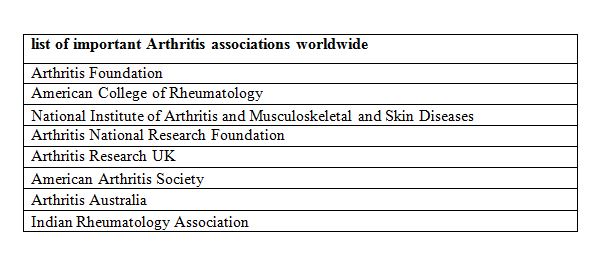Previous Speakers
Conference Information
Market Analysis
Importance and scope:
Medical doctors, patients, and health care providers consider the prevention of orthopedic diseases as an essential tool to improve the general health status of the population. Worldwide, osteoporosis causes more than 8.9 million fractures annually, resulting in an osteoporotic fracture every 3 seconds Osteoporosis is estimated to affect 200 million women worldwide.Increase in osteoporosis cases results in a decline in the economy with respect to health. The prevalence of osteoporosis and Arthritis is continuing to escalate with the increasingly elderly population. Hence it is necessary to start a global initiative for awareness, prevention and effective treatment of osteoporosis.
International Conference on Osteoporosis, Arthritis and Musculoskeletal Disorders 2017 aims at gathering physicians, rheumatologists, young researchers, students, physiatrists, orthopedists, and geriatricians at a global platform to present their respective views and research regarding osteoporosis and share knowledge about osteoporosis for the betterment of both academia and business.
Why Spain?
In 2010 approximately 204,000 new fragility fractures reported in Spain. The economic burden of new and prior fractures € 2,842 million each year; by 2025 burden will increase by 30 % to € 3.68 billion. Bone mineral density measurement is underutilized in majority of European countries due to limited availability of densitometers, restrictions in personnel permitted to perform scans, low awareness of usefulness of BMD testing, limited or nonexistent reimbursement.
In Spain, there was a 54% increase in new cases of hip fracture within a 14-year period (1998-2002). This increase occurred mainly in women (64%) compared to men (19%).Spain: 13% of patients who have suffered a fracture die after 3 months and this figure rises to 38% after 24 months. Furthermore, after experiencing a vertebral fracture, 45% of patients suffer from functional damage and 50% are afflicted by partial or total disability in Spain. Average total annual costs for arthritis were euro1500 per patient. Direct costs accounted for 86% of the total cost. Estimated national cost was 4740 million euros, which was about 0.5% of the gross national product.
Long-term disability costs were estimated around € 51,786 with the simulated number of individuals with prior fractures that had been transferred to nursing homes due to the fracture. Patients on treatment made an annual physician visit costing € 109 and a DXA scan costing € 79 every second year to monitor treatment. The cost of osteoporosis in 2010 was estimated at € 2,842 million. First-year costs, subsequent year costs and pharmacological fracture prevention costs amounted to € 1,372 million, € 1,055 million and € 414 respectively.
List of major companies producing drugs for osteoporosis treatment:-
· Merck
· Novartis
· Sunofi
· Eli lilly and company
· Amgen
|
list of osteoporosis associations in Spain |
|
Spanish Association against Osteoporosis(AECOS) |
|
Sociedad Espanola Defracturas osteoporoticas (SEFRAOS) |
|
Osteoporosi Y Enfermedades Metabolicas Oseas (FHOEMO) |
|
Spanish Orthopaedic and Traumatology Society |
|
Hispanic Foundation for Osteoporosis and Metabolic Bone Diseases |
|
list of important osteoporosis associations worldwide |
|
International Osteoporosis Foundation (IOF) |
|
National osteoporosis society (NOS) |
|
Osteoporosis Society of India |
|
Osteoporosis Australia |
|
Hong Kong Osteoporosis Foundation |
|
Malaysian Osteoporosis Society |
|
China Osteoporosis Foundation |
|
The European Society for Clinical and Economic Aspects of Osteoporosis, Osteoarthritis and Musculoskeletal Diseases |
|
Osteoporosis society of the Philippines |
|
Osteoporosis Society of Canada |
|
American Bone Health |
|
California Hispanic Osteoporosis Foundation (CHOF) |
Present and future scenario:
There were an estimated 9.0 million osteoporotic fractures in the year 2000 of which 1.6 million were hip fractures, 1.7 million forearm fractures and 1.4 million were clinical vertebral fractures. The high number of osteoporotic fractures occurred in Europe (34.8%). Present survey depicts that Osteoporosis is estimated to affect 200 million women worldwide. About 1/10 of women aged 60, 1/5 of women aged 70, 2/5 of women aged 80 and 2/3 of women aged 90. Approximately twenty-two million women and five and a half million men in the European Union had osteoporosis in 2010. In the United States, about 8 million women and one to 2 million men had osteoporosis in 2010. This causes a large economic burden on the healthcare system due to costs of treatment, long-term disability, and loss of productivity in the working population. The European Union spends thirty-seven billion euros per year in healthcare costs related to osteoporosis, and the USA spends an estimated nineteen billion US dollars annually for related healthcare costs. The major complication of osteoporosis is an increase in fragility fractures leading to morbidity, mortality, and decreased the quality of life. In the European Union, the number of osteoporotic fractures was estimated at 3.79 million in 2000. A baseline fracture is a very strong predictor of further fractures with twenty percent of patients experiencing a second fracture within the first year. Osteoporosis Drugs Market might reach 8.9 billion US dollars in 2020 due to High Incidence of Osteoporosis. The costs to health care services are already considerable and, on current trends, are predicted to double by 2050. The burden of rheumatoid arthritis which is incurable autoimmune disorder increases with age and progression of the disease. It’s estimated to have an effect on about 4.9 million people across the key markets. It is expensive to health care services and results in substantial economic and quality of life impairments for patients, at least 500th of who are unable to keep up full-time employment within ten years of onset. Rheumatoid arthritis drug market will experience slight growth over 10 years as sales increase from $11.1 billion in 2011 to $15.2 billion in 2021 in the United States, France, Germany, Italy, Spain, the United Kingdom and Japan. It is predicted that the global osteoarthritis pain drugs market to grow at a CAGR of more than 8% by 2020. There are significant unmet medical needs in this market due to the chronic nature of osteoarthritis and the absence of effective curative therapies.
About conference
Pulsus invites you to attend “International Conference on Osteoporosis, Arthritis and Musculoskeletal Disorders ” that is to be held during December 4-5, 2017 at Madrid, Spain providing an international platform for physicians, rheumatologists, young researchers, students, physiatrists, orthopedists, and geriatricians to share the information and scientific progress in treating osteoporosis and musculoskeletal disorders.
This conference concentrates on the newest and advanced innovations in all the areas of osteoporosis and arthritis research. This conference highlights the theme, “Osteoporosis and Musculoskeletal Disorders as a primary health concern” that emphasizes on the quality health of the world population. The conference includes workshops, symposiums, special keynote sessions conducted by eminent and notable speakers who surpass in the field of orthopedics that include the topics Osteoporosis endocrinology, Arthritis, Osteoarthritis, Rheumatoid Arthritis, Musculoskeletal Disorders, Pharmacological Treatment, Alternative Treatments, Nutrition and Prevention. This International Conference additionally encourages the active participation of young student researchers since we are hosting Poster Award Competition and Young research Forum at the conference venue.
Why to attend:
Medical doctors, patients, and healthcare providers contemplate the hindrance of orthopedic diseases as a vital tool to enhance the overall health status of the population. Worldwide, osteoporosis causes over 8.9 million fractures annually, leading to an osteoporotic fracture every three seconds. Musculoskeletal conditions including arthritis have a significant impact on society due to their incidence, severity, and resultant incapacity.
Osteoporosis is estimated to have an effect on two hundred million women worldwide - about ten percent of women aged sixty, twenty percent of women aged seventy, forty percent of women aged eighty and thirty-three percent of women aged ninety. It is estimated that the residual lifetime risk of experiencing an osteoporotic fracture in men over the age of fifty is up to twenty-seven. All types of arthritis are the major cause of pain in elderly ad well as in children as in the case in of juvenile arthritis. Osteoarthritis is irreversible, thereby difficult to cure. The genetic contribution to the susceptibility to rheumatoid arthritis is estimated to be 60%. Recognizing the importance of this issue, Pulsus group is set to arrange a conference on osteoporosis and musculoskeletal disorders during December4-5, 2017 at Madrid, Spain planning to increase awareness of the diseases with relation to current standing and future burden of the diseases on world population. This conference additionally provides a worldwide platform for physicians, rheumatologists, young researchers, students, physiatrists, orthopedists, and geriatricians to share the information and scientific progress in treatments.
Target Audience:
o Osteology Students and Scientists
o Osteoporosis Researchers
o Arthritis Researchers
o Orthopedists
o Osteology Faculty
o Rheumatologists
o Diagnostic Radiologists
o Physiotherapists
o Medical Colleges
o Orthopedic Associations and Societies
o Business Entrepreneurs
o Training Institutes
o Manufacturing Medical Devices Companies
o Data Management Companies
o Prosthetists and orthotics
Tracks/Sessions
Track 1: Osteoporosis and geriatrics
Osteoporosis is a decrease in the density of bone, decreasing its strength and leading to fragile bones. Most cases of osteoporosis occur in postmenopausal women and older men. Gonadal insufficiency is a very important factor in both men and women for osteoporosis. Symptoms of osteoporosis are fractures of the spine, wrist or hip, Backache, a gradual loss of height and an accompanying stooped posture. Hormonal factors considerably determine the pace of bone resorption; lack of estrogen as a result of menopause will increase bone resorption, also as decreasing the deposition of new bone that takes place in weight-bearing bones resulting in osteoporosis.
Track 2: Osteoporosis Endocrinology
Hormonal factors considerably determine the pace of bone resorption; lack of estrogen as a result of menopause will increase bone resorption, also as decreasing the deposition of new bone. Endocrinology is an important aspect of osteoporosis. Calcium metabolism additionally plays a major role in bone turnover, and deficiency of calcium and vitamin d ends up in impaired bone deposition; additionally, the parathyroid glands react to low calcium levels by secreting parathyroid hormone (parathormone, PTH), that will increase bone resorption to make sure ample calcium in the blood.
Track 3: Rheumatoid Arthritis
Rheumatoid arthritis is an autoimmune disorder which mainly affects joints. The typical symptoms of rheumatoid arthritis are warm, swollen, and painful joints. Pain and stiffness progresses and becomes worse when treated. The wrist and hands are most commonly affected in rheumatoid arthritis. Rheumatoid Arthritis may also affect other parts of the body. This may result in complications like low red blood cell count, inflammation around the lungs, and inflammation around the heart. Fever and low energy are also the symptoms of rheumatoid arthritis.
Track 4: Osteoarthritis
Osteoarthritis is a joint disease caused due to breakdown of joint cartilage and the underlying bone. Osteoarthritis is the most common type of arthritis Causes are abnormal joint or limb development, previous joint injury, and genetic factors. Risk is high in overweight people, those who have one leg of a different length, and have jobs that lead to high levels of joint stress. The symptoms include pain in the affected area, resulting in decreased ability to move and stiffness, occasional effusion, tenderness, crepitus. Commonly affected areas are hands, spine, and knees.
Track 5: Juvenile Arthritis
Juvenile arthritis is an autoimmune disease in which the inflammation of the synovium occurs in children aged 16 or younger. There are different types of juvenile arthritis based on the symptoms and body parts that are affected. Some types of Juvenile arthritis are Systemic arthritis, Oligoarthritis, Polyarthritis, Enthesitis-related arthritis. Juvenile arthritis is idiopathic without known cause. Genetic factor is believed to be one of the reasons.
Track 6: Arthritis and inflammatory diseases
There are different types of Arthritis which contribute to joint pain. Most of the Arthritis types are either degenerative or atypical in cause. But some of the arthritis types are caused by Autoimmunity. Some of the other common Arthritis joint diseases besides osteoarthritis and rheumatoid arthritis include Lupus, gout, Bursitis, Adult Still’s Disease. The common symptom for all the types of arthritis is joint pain in different body parts.
Track 6: Musculoskeletal Disorders
Musculoskeletal disorders are the ones that affect muscles, bones and related nerves. Some of the common musculoskeletal disorders are epicondylitis, carpal tunnel syndrome, back pain, tendinitis, tension neck syndrome, fibromyalgia etc. The severity of each musculoskeletal disorder varies in terms of pain and disability. Most of these conditions may be caused due to mechanical stress and common wear and tear. Some musculoskeletal disorders maybe of genetic origin. These disorders drastically affect the everyday life due to decrease in motion, fatigue and pain.
Track 8: Advancements in Diagnostic Tools
Based on the symptoms and severity diagnosis of musculoskeletal disorder can be done, however, in certain cases it is difficult to differentiate. The most common tool for diagnosis of most of the musculoskeletal disorders is the x-ray as in case of osteoarthritis. Dual-energy X-ray absorptiometry scan (DXA) can be used for the diagnosis of osteoporosis. Other diagnosis tools include MRI, Ultrasound and certain tests like blood tests and urine tests. Rheumatoid arthritis is diagnosed by an elevated erythrocyte sedimentation rate or C-reactive protein, which may indicate the presence of an inflammatory process in the body. Other common blood tests look for rheumatoid factor and anti-cyclic citrullinated peptide antibodies. Chemical biomarkers are very useful tools in detecting bone degradation.
Track 9: Novel Pharmacological Treatments
Treatment of osteoporosis is achieved by using SERMS most commonly. Strontium ranelete and hormonal replacement therapy in post-menopausal women shows effective treatment of osteoporosis. Treatment for pain in osteoarthritis is done using acetaminophen primarily. NSAIDS and opioids may also be used for treatment of osteoarthritis and most of the musculoskeletal disorders including rheumatoid arthritis. Disease-modifying antirheumatic drugs can slow the progression of rheumatoid arthritis which includes methotrexate, leflunomide, hydroxychloroquine and sulfasalazine.
Track 10: Orthopedic Surgeries
Orthopedic surgeries are performed in case of trauma as well as for musculoskeletal disorders. Kyphoplasty and vertebroplasty are the common surgical procedures in case of spinal fractures in osteoporosis. Vesselplasty is a surgical alternative in the treatment of vertebral compression fractures which is minimally invasive. Arthroscopy is performed in case of arthritis to examine and repair a joint. Arthroplasty is the joint reconstruction or replacement surgery. An osteotomy may relieve symptoms of osteoarthritis, but knee replacement surgery eventually is needed in case of severe osteoarthritis. Other surgical procedures for arthritis include Synovectomy, Tendon repair, and Joint fusion.
Track 11: Musculoskeletal regenerative medicine
Regenerative medicine is the branch of medicine that deals with the use of therapeutic stem cells, tissue engineering for regenerating human cells and production of artificial organs. Several of the regenerative medicine products currently available in the market are used for musculoskeletal disorders. Mesenchymal precursor cell (MPC), Mesenchymal Stem cells, autologous engineered neocartilage is some of the commonly used techniques. Intense research is in progress globally for the different possibilities of regenerative medicine in musculoskeletal regeneration
Track 12: Alternative Treatments
Exercise is a critical part of strengthening bone mass and musculoskeletal health. Acupuncture and Tai Chi are also used for Osteoporosis and osteoarthritis and other musculoskeletal disorders. While more scientific research is needed on the subject, some herbs and supplements are believed to reduce or potentially stop bone loss caused by osteoporosis. There are numerous benefits to using physiotherapy as a method for treating patients with osteoporosis, Arthritis and other musculoskeletal disorders.
Track 13: Nutrition and Prevention
Nutrition is the most important criteria for general health and prevention of musculoskeletal disorders. Food rich in calcium and vitamin D like milk, yogurt, fish etc. prevent osteoporosis. Fish and other food with omega-3 fatty acids are beneficial for joints. Consumption of required amount of water daily is necessary as water lubricates the joints. Daily intake of fruits and vegetables with various benefits is necessary for bone health. Fruits rich in Vitamin C and Vitamin A are good for joints. Vitamin C may slow the wear and tear on your joints by playing a key role in the formation of collagen, which is a key component of cartilage and bone helping in osteoporosis and Arthritis. Antioxidants which help fight free radicals are necessary for general health.
Track 14: Supportive Approaches
An orthosis is an externally applied device which is used to modify the structural and functional characteristics of the neuromuscular and skeletal system which are used in supportive treatment of osteoporosis, arthritis and other musculoskeletal disorders. In patients with osteoarthritis of the knee and hip Moderate exercise is beneficial with respect to pain and function. Knee braces and prosthetics maybe uses for relieving the pain by decreasing the stress on joints. Supplements with necessary vitamins can be useful for supportive treatment in musculoskeletal disorders. Calcium and Vitamin D supplements are recommended in osteoporosis to improve bone density. Glucosamine and SAMe have research background for maintaining joints.











